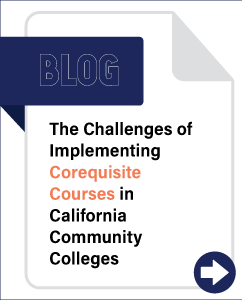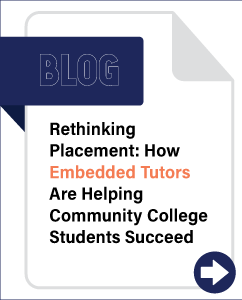In the United States, postsecondary education has become essential for economic success. Whereas a generation or two ago, a high school diploma was often enough, most employers today expect candidates to have some form of postsecondary credential (Carnevale et al., 2023).
This shift in the job market has led to more diversified skill sets and needs among students accessing postsecondary education, particularly in community colleges and regional four-year institutions (Goldrick-Rab, 2023). However, simply expanding access to higher education is not enough to ensure success in the workforce. Postsecondary institutions must also offer holistic student supports—both academic and nonacademic—to help students complete their degrees or credentials.
Research for Action (RFA) collaborates with institutions, organizations, and funders to identify best practices in holistic student supports and what it takes to scale them to more schools. We’ve explored a range of student supports, from advising to cultivating students’ help-seeking behavior, in various contexts.
To share what we’ve learned, RFA’s postsecondary team is launching a blog series, highlighting key findings from our research on holistic student supports. In this introductory post, we frame the series by drawing on learnings from the literature to define holistic student supports and outline their role in postsecondary success.
What Are Holistic Student Supports?
In a holistic student supports approach, academic and nonacademic services are personalized to each student’s individual needs. They function as interconnected tools rather than standalone interventions, creating an integrated support structure (Achieving the Dream, 2018). Rigorous studies have consistently found long-term, positive effects on student outcomes as a result of holistic supports (Feygin et al., 2022; Karp et al., 2021), including building social connections, setting goals and staying motivated, and managing challenges.
In addition to referring students to institutional supports, such as the tutoring center or campus food pantry, a holistic approach includes proactive follow-up with students to monitor their progress and ensure that any problems hindering their academic success, including nonacademic issues, are addressed.
Holistic supports elevate much-needed attention to students’ basic needs, including food and housing security, transportation to and from campus, health care (including access to mental health support), child and dependent care, financial aid, and access to technology. While some of these supports may be provided through campus-based resources, institutions may also need to partner with other organizations and agencies to connect students with all the necessary wraparound services. For example, College Possible provides students with coaching support to help them get to and through college successfully.
Research suggests that academic advisors play an important role in helping students navigate and access supports. Karp and colleagues argue that “when integrated within a holistic student support model, advising plays a central role in helping students navigate the complicated systems and experiences of college by connecting students to a wide range of supports and opportunities.” The SSIPP framework, derived from a review of the literature on institutional services and interventions that help students navigate academic and nonacademic resources, provides recommendations on the role of advisors in holistic supports systems:
- Sustained support is offered to students throughout their tenure at the college.
- Strategic deployment of advising resources is achieved by creating systems that differentiate support for students depending on their needs and interests.
- Integration of advising with other student supports, as well as other aspects of the college experience, is likely to serve students more effectively.
- Proactive advising is needed to make sure that all students are reached; students who most need support may not come and ask for it.
- Personalized advising is achieved when advising is offered by someone who knows a student well and is attuned to their needs and interests
(Karp & Stacey, 2013; Kalamkarian et al., 2018; Klempin et al., 2019).
We’ve already written about two key supports for students, specifically in the context of developmental education reform: embedded tutoring and corequisite support:
- Academic supports in the context of developmental education reform: Postsecondary institutions and systems are revising their placement policies for incoming students. They are doing so increasingly by eliminating placement testing and encouraging or requiring students to enroll in college-level courses rather than developmental education courses. However, this shift requires additional supports to help the students succeed in their coursework. In our study of the implementation of developmental education reform in California community colleges, we have explored the successes and challenges of two of the most common cocurricular supports:
- Embedded tutoring: In this model, students who have successfully completed a college-level course are recruited to provide in-class support to students during a subsequent semester. You can read more about our work on embedded tutoring here; and
- Corequisite support: In this model, college-level courses are offered with a joint lab to support student success in the course. Read more about our work on corequisite supports here.
What’s Next in This Blog Series?
Through this blog series, we will continue to highlight key findings from our work on integrated holistic student supports and will explore the role of academic and nonacademic services that can help students succeed in their postsecondary education. Here’s a preview of the topics future posts will explore.
- Holistic student supports in last-dollar scholarship programs: While there has been considerable attention to the importance of increasing college access through last-dollar scholarship programs, completion rates have not kept pace with enrollment growth. In response, some programs have included holistic student supports, such as coaching and wraparound services, to support successful degree completion. In this post, we summarize takeaways from our work with tnAchieves and the Catto Scholarship to outline how holistic student supports are supporting students in Tennessee and Philadelphia to achieve postsecondary success.
- Staff buy-in and attitudinal shifts: For these and other holistic student supports to be successfully implemented, the administrators, faculty, and staff doing the work on the ground need the disposition to embrace an anti-deficit mindset, meeting students where they are, and acknowledging the experiences that each brings as a foundation in their learning journey.
- Belonging and help-seeking as key outcomes of holistic student supports: Our research highlights students’ sense of belonging and help-seeking behavior as key contributors to degree completion. In this post, we’ll describe how holistic student support structures can help students establish a sense of belonging on college campuses and how coaches and tutors can support healthy help-seeking behavior by reducing the stigma associated with asking for help.
- Instructional strategies to meet student needs: Faculty members in California community colleges are incorporating new pedagogical approaches to provide more differentiated instruction to students in introductory, college-level math and English courses and work to meet students where they are in their learning journey. Examples of these strategies include just-in-time remediation, flexibility in assignment deadlines, and collaborative assessments, among others.
- Essential practices in advising and other student supports: Through a review of the literature, interviews with experts in the field, and lessons learned from providers, we’ve gleaned a set of essential practices for serving individual students, supporting traditionally underserved students, and implementing these practices at the institutional and system levels.


